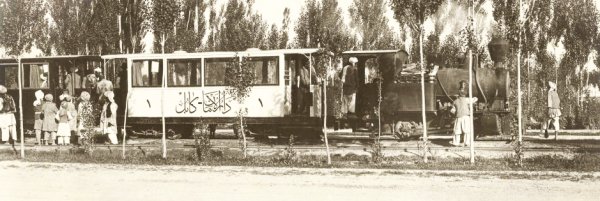Go to recent news and updates.


The only main line railways in Afghanistan are one line across the northern border from Uzbekistan, two short cross-border lines from Turkmenistan and a line from Iran.
Afghanistan’s various leaders have often opposed railway construction, fearing — with some justification — that foreign powers could use railways to threaten their independence. A number of railways were built towards Afghanistan’s borders, only to stop short of the frontier; Amir Abdul Rehman described the British-built line to Chaman as “A knife pushed into my vitals”.
Despite this antipathy to railways, the country has had a handful of short lines in the past. This history of Afghan railways describes what I have been able to find out about them, including those that were only planned.
If you can provide any more information, pictures or corrections, please do get in touch with me.
Andrew Grantham
Surrey, UK
Disclaimer
Please note that these pages are completely unofficial and apoliticial (although written with an assumption that railways are generally a Good Thing). I do not represent the Afghan (or any other) government, I do not operate trains in or to Afghanistan, and I can’t sell you spare parts or provide transport services.
Even when the various railway lines were operational, details of what existed were somewhat unclear. The information here is supplied in good faith, but I can offer no guarantees that it is 100% correct; it is certainly far from complete. Most information has been gathered from secondary sources, and I have no plans to visit the region. If you have any more details or can correct my mistakes and misunderstandings, I’d love to hear from you.
An earlier, shorter, version of this text formed the basis of an article I wrote for the July 2002 issue of The Railway Magazine. If you would like to use this text elsewhere, please ask me first.
A note on place names
An attempt has been made to spell place names consistently, using a combination of the Times Atlas of the World and whatever appears to be the most popular spelling in English. This may cause some anachronisms where names and common transliterations have changed. For example, Mary was called Merv until 1937. The most common English spelling of the Afghan-Uzbek border crossing point seems to have drifted from Hayratan to Hairatan, but there are numerous variations in use. Unfortunately I don’t speak any of the local languages, so the transliterations used may not be linguistically consistent with each other.
Most of the areas of India mentioned became part of Pakistan on independence in August 1947. Iran was previously known as Persia, and western sources commonly use “Russia” indiscriminately to mean anything in the USSR.